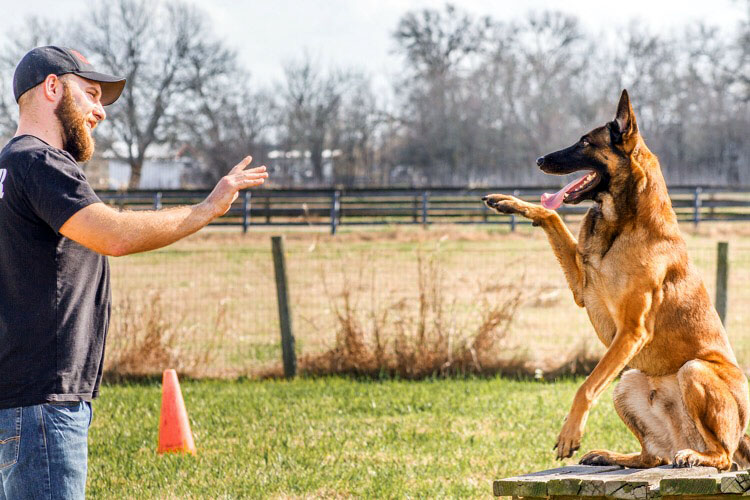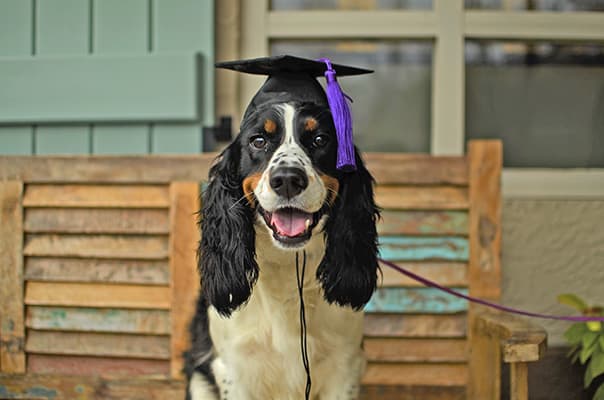Dog Training Near Me: Find Local Experts for Customized Training Programs
Dog Training Near Me: Find Local Experts for Customized Training Programs
Blog Article
Newbie's Overview to Effective Dog Training at Home
Successfully training a pet at home calls for a nuanced understanding of canine actions and effective communication techniques. Developing clear training goals, using high-quality rewards, and maintaining consistency throughout household members are crucial components. Integrating training into everyday routines can enhance both interaction and retention.
Comprehending Canine Actions
Comprehending canine habits is important for efficient training and promoting an unified relationship between people and their canine companions - Puppy Training. Pets communicate mostly with body movement, articulations, and facial expressions, making it vital for proprietors to interpret these signals accurately. Recognizing habits such as tail wagging, roaring, or cowering can give understandings into a pet dog's mood and purposes
Moreover, comprehending the natural instincts of pet dogs, such as their pack mindset, helps proprietors establish leadership roles within the home. This is vital for creating a structured environment where pet dogs feel safe and are a lot more receptive to training. Dogs are likewise influenced by their socialization experiences; early direct exposure to numerous atmospheres, individuals, and other animals can substantially shape their behavior later in life.
Typical behavioral concerns, such as aggressiveness, anxiousness, or extreme barking, typically stem from misunderstandings or unmet demands. Observing and dealing with these problems without delay can avoid acceleration and make certain a favorable training experience. By fostering a deep understanding of pet dog habits, owners can customize their training methods to suit their canine friends, inevitably resulting in a contented and well-behaved pet.

Necessary Educating Tools
A fully equipped training space can considerably boost the performance of canine training at home. Vital training devices ensure that both the trainer and the canine can participate in effective sessions that cultivate learning and bonding.

Purchasing a strong leash and a comfortable, well-fitting collar or harness is crucial for security and control. These devices assist establish boundaries and make certain the pet continues to be safe and secure throughout training. In addition, an assigned training area, complimentary from disturbances, help focus for both the fitness instructor and the canine.
Training help such as training pads, cones, or dexterity devices can likewise improve the experience by introducing variety and difficulties. Lastly, having a note pad or electronic application for tracking development can be important, allowing you to keep in mind successes and areas for renovation. Using these important devices will create a positive training environment and lay the structure for efficient understanding.
Creating a Training Routine
Establishing a consistent training regimen is vital for effective pet training in your home. A well-structured regular not just helps in enhancing preferred behaviors yet likewise provides your pet dog with a complacency and predictability. To create a reliable training official statement routine, start by identifying certain training goals, such as fundamental commands, chain strolling, or house-training.
Choose a marked time each day for training sessions, preferably when your dog is receptive and sharp. Sessions must be short, about 5 to 15 minutes, to preserve focus and stop fatigue. Consistency in timing and setting will improve your pet dog's knowing experience.
Include training into day-to-day activities to reinforce abilities. For instance, method commands throughout walks or mealtime, which incorporates finding out into all-natural regimens. Additionally, stay adaptable and readjust the routine as necessary, accommodating your canine's power degrees and mood.
Positive Reinforcement Methods

When applying positive reinforcement, it is vital to pick benefits that are inspiring for your canine. High-value treats, such as tiny pieces of poultry or cheese, can be especially efficient throughout training sessions. Furthermore, differing the benefits can keep your pet's passion and excitement.
Start with basic commands, like "rest" or "remain," and progressively progression to extra complex jobs. Consistency is crucial; make certain that all member of the family utilize the same commands and benefit systems to prevent complication.
Additionally, it is important to continue to be person and avoid stress. Pet dogs, like humans, learn at their own pace. By fostering a helpful training environment through positive support, you can boost your canine's Puppy Training learning experience while enhancing the bond between you and your fuzzy companion, laying the foundation for successful training end results.
Usual Training Difficulties
While training a canine in the house can be a fulfilling experience, it commonly features a collection of typical obstacles that can evaluate both persistence and uniformity. One common problem is diversion. Canines may become easily sidetracked by sounds, motions, or even scents in their environment, making it challenging to maintain their emphasis throughout training sessions.
One more challenge is incongruity in commands and reinforcement. If family participants make use of various cues or incentives, it can confuse the dog and hinder development. Developing a unified technique is essential for effective interaction.
Furthermore, pets can experience disappointment or tension, especially if they do not recognize what is expected of them. This can bring about unfavorable behaviors, such as barking or eating.
Ultimately, the timing of reinforcement is vital. Postponed incentives can Visit Website diminish the performance of favorable support, as pets might fall short to connect the actions with the incentive.
Overcoming these obstacles requires commitment, clear communication, and an organized training strategy - Puppy Training. Identifying and attending to these usual challenges will certainly pave the means for a much more successful and delightful training experience in your home
Final Thought
In verdict, successful dog training at home requires a detailed understanding of canine habits and reliable communication strategies. By establishing clear training objectives and making use of high-grade treats along with positive support, the training procedure comes to be more fulfilling for both the instructor and the pet dog.
Developing a regular training regimen is important for reliable dog training at home.Positive reinforcement techniques are basic to efficient canine training, promoting wanted habits through rewards instead than punishment. By cultivating a helpful training environment with positive support, you can enhance your pet's understanding experience while reinforcing the bond in between you and your hairy friend, laying the foundation for effective training end results.
In conclusion, successful dog training at home requires a thorough understanding of canine habits and effective communication strategies. By developing clear training goals and making use of top notch treats alongside favorable reinforcement, the training procedure comes to be more rewarding for both the instructor and the pet dog.
Report this page